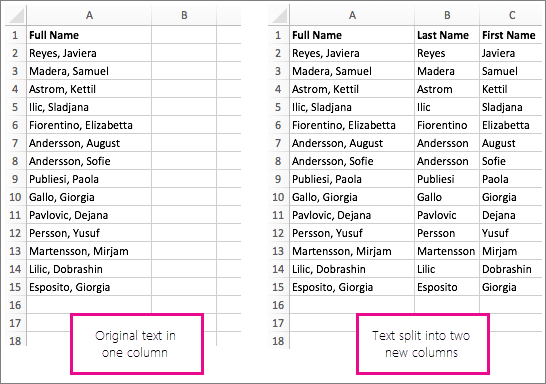
:max_bytes(150000):strip_icc()/005-how-to-merge-and-unmerge-cells-in-excel-0598c003032f4351bbf432d0aa180e0b.jpg)
So far we have deleted all merged cells in the specified range. A warning dialog box comes out as below screenshot shown. In the popping up Delete dialog box, check the Shift cells left option or Shift cells up option as you need, and click the OK button.Ĩ. Right click any merged cell, and select the Delete from the right-clicking menu. Now all merged cells are selected in the specified range. You can Select all merged cells by selecting one merged cell in the Find and Replace dialog box, and then pressing the Ctrl + A keys simultaneously.Ħ. Select all of fount out merged cells in the Find and Replace dialog box, and then close the Find and Replace dialog box. Now you get back to the Find and Replace dialog box, please click the Find All button.Īnd then all merged cells are found out and listed at the bottom of the Find and Replace dialog box.ĥ. In the opening Find Format dialog box, go to the Alignment tab and only check the Merged Cells option, and then click the OK button. In the opening Find and Replace dialog box, please click the Options button to expand the Find and replace options, and then click the Format button. Note: You can also open the Find and Replace dialog box by clicking Home > Find & Select > Find.Ģ. Select the range you will find out all merged cells, and open the Find and Replace dialog box by pressing the Ctrl + F keys simultaneously.
REMOVE MERGE AND CENTER IN EXCEL FULL
For example, if you are dividing a full name into a first name column and a last name column, select the appropriate number of cells in two adjacent columns.Ĭlick the button to expand the popup window again, and then click the Finish button.This method will find all merged cells in the specified range with the Find and Replace feature, and then delete these merged cells. Repeat this for all of the columns in the preview window.Ĭlick the button to the right of the Destination box to collapse the popup window.Īnywhere in your workbook, select the cells that you want to contain the split data. If you don't want the default format, choose a format such as Text, then click the second column of data in the Data preview window, and click the same format again. A preview of the data appears in the panel at the bottom of the popup window.Ĭlick Next and then choose the format for your new columns. Or, check both the Comma and Space boxes if that is how your text is split (such as "Reyes, Javiers", with a comma and space between the names). Simply add empty columns, if necessary.Ĭlick Data > Text to Columns, which displays the Convert Text to Columns Wizard.Ĭheck the Space box, and clear the rest of the boxes. Also, ensure that are sufficient empty columns to the right-so that none of your data is deleted.


Note: Select as many rows as you want, but no more than one column. Select the cell or column that contains the text you want to split. This is the opposite of concatenation, in which you combine text from two or more cells into one cell.įor example, you can split a column containing full names into separate First Name and Last Name columns:įollow the steps below to split text into multiple columns: You can take the text in one or more cells, and distribute it to multiple cells. Split text from one cell into multiple cells If you need to reverse a cell merge, click onto the merged cell and then choose Unmerge Cells item in the Merge & Center menu (see the figure above). To merge cells without centering, click the arrow next to Merge and Center, and then click Merge Across or Merge Cells. Cells formatted as a table typically display alternating shaded rows, and perhaps filter arrows on the column headings. If Merge & Center is disabled, ensure that you’re not editing a cell-and the cells you want to merge aren’t formatted as an Excel table.


 0 kommentar(er)
0 kommentar(er)
